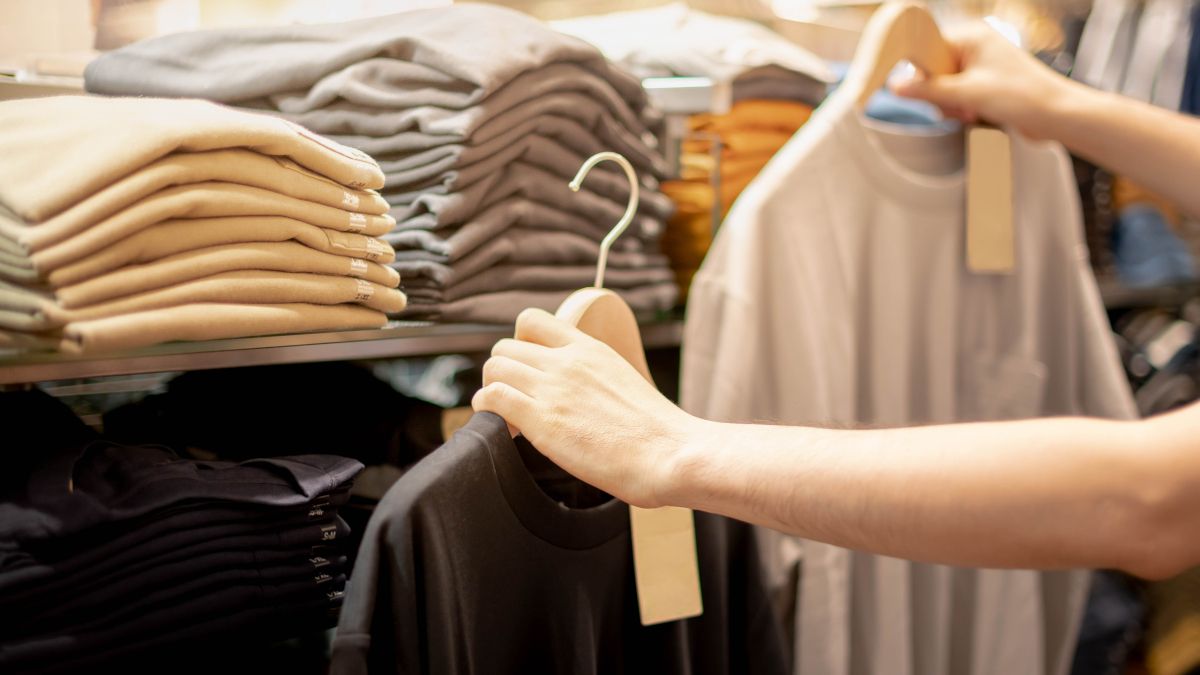Quick Links
If you're planning to go clothes shopping on reseller markets, look out for products that are "NWT" and "BNWT," Here's what these acronyms mean and how to use them on online marketplaces.
New With Tags
NWT and BNWT are internet acronyms for "new with tags" and "brand new with tags," respectively. These terms are used on online marketplace sites to specify that an item, usually an article of clothing, is unused and still has its tags intact. NWT and BNWT are entirely synonymous with each other and can be used interchangeably depending on the scenario.
NWT and BNWT share many similarities with NIP, which stands for "new in packaging." These are also products that have "proof" that they're unused. NIP is generally for products in sealed boxes or packs, such as electronics or shoes. On the other hand, NWT is for products that don't have packaging but have a tag on them, such as garments.
This acronym can also sometimes refer to some products with a tag but are not necessarily clothes. For example, some plush toys have authenticity tags instead of packaging like cardboard boxes.
The History of NWT & BNWT
NWT and BNWT were invented in the late 90s and early 2000s as a way for people on sites like eBay and Craigslist to describe the condition of their listings. The first definition for NWT on the internet slang repository Urban Dictionary was created in November 2003 and reads, "If you are an eBayer, NWT means New With Tags." This further solidifies that a specific language and culture was forming around online resale at the time.
Eventually, NWT and BNWT rose to mainstream prominence as online reselling became more widely accepted. On top of socially integrated commerce platforms like Facebook Marketplace, these acronyms are common on local community pages and groups.
Do Tags Matter?
Since clothes usually don't have individual packaging, the only way to verify that something is likely completely brand new is with the tag. This is assurance that an item has never been worn and is in the same condition as when you bought it.
Tags also help to verify the authenticity of clothes. There are many convincing counterfeits of famous fashion brands, so tags are a way to ensure that you bought these from a legitimate source. If you want total assurance, you could also provide a receipt or proof of purchase from the original retailer.
However, even if a product is NWT or BNWT, that's still not total assurance that a product is unused and authentic. There have been instances of people adding fake tags to counterfeit or used products to sell them close to the original retail price. That's why you should deal with trusted sellers willing to provide additional information about the product. This is the best way of making sure you don't get ripped off.
Why Sell With Tags
If you're a buyer, you might have some skepticism about buying supposedly "brand-new" clothing. After all, why would someone purchase clothes if they're going to resell them right after? However, there are a few reasons why someone might want to sell an unused garment.
The first (and most likely) scenario is that they're resellers. It's common to sell certain clothing brands on a secondary market, especially if they're labels that are hard to come by. This includes some luxury designer brands that you can purchase from another country. There are also certain clothing types, such as streetwear or limited-edition sneakers, sold in a capped quantity. This means most people will be buying these products on the resale market.
Another common scenario is that the seller may have purchased something only to find out it's in the wrong size. While many online stores try to take steps to avoid this, such as providing size charts or "true-to-size" (TTS) labels, there are still many instances of people ordering clothes that don't fit. Instead of modifying their garments, many will opt to sell them instead.
Lastly, some people may have just changed their minds about the purchase. Maybe they bought an expensive designer bag then realized that it was too expensive. Perhaps they received an article of clothing in person that doesn't meet their expectations based on online photos. They can then resell it to recoup some of the initial cost.
How to Use NWT & BNWT
If you want to use NWT and BNWT in your posts, add them to your listing description. If you're a buyer, then you can specify that you're looking for an NWT item when you're making a "WTB" or "want to buy" post.
Here are a few examples of NWT and BNWT in action:
- "Selling a size eight dress from Topshop, NWT."
- "I heard that they sell a lot of great NWT products in this group."
- "Looking for a BNWT pair of Adidas slides, message me!"
You'll be ready to hold an internet garage sale in no time!

